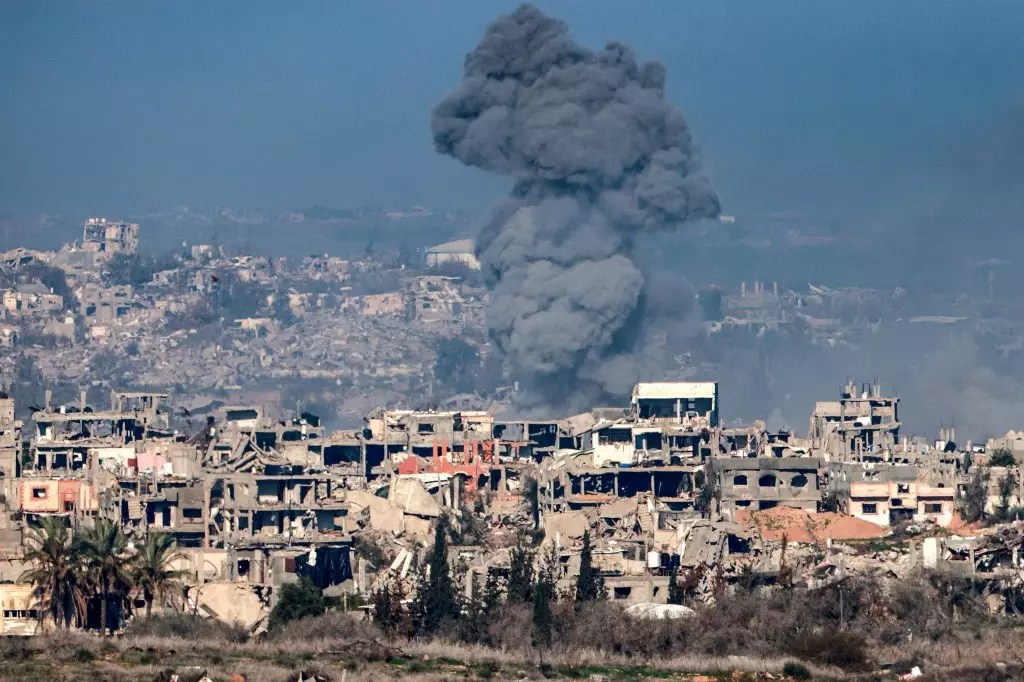On Sunday morning, hope flickered amidst the pervasive chaos in Gaza as a ceasefire came into effect, marking a pivotal moment in a protracted conflict. Delayed by nearly three hours from its anticipated start time of 6:30 AM GMT, the ceasefire was initiated once Hamas disclosed the names of three hostages — Doron Steinbrecher, Emily Damari, and Romi Gonen — whose release was a precondition. This announcement was met with a mix of relief and skepticism among Gazans, many of whom began to cautiously return to their homes in a landscape ravaged by conflict.
As the ceasefire was negotiated, the atmosphere remained fraught. Despite the agreement, Israeli military actions persisted during the delay, reflecting deep-rooted tensions that still overshadow the region. Reports indicated that 19 Palestinians lost their lives in that brief interlude, a somber reminder of the violence that has characterized this conflict since its escalation on October 7, 2023. The timeline of events continues to highlight a fragile peace, wavering on the brink of collapse.
The Human Cost of Conflict
The numbers speak volumes about the tragic toll this conflict has exacted on both communities. The violent exchange initiated by Hamas’s attack resulted in the deaths of approximately 1,200 Israelis and the abduction of 251 citizens. In retaliation and amidst ongoing hostilities, the Palestinian death toll has soared to more than 46,000, revealing the human cost of this ongoing turmoil. Each statistic represents not just numbers, but shattered lives and communities mourning their losses.
This imbalance raises critical questions about the humanitarian crisis unfolding in Gaza and the international community’s role in addressing these concerns. The sheer scale of the tragedy calls for urgent measures to alleviate the suffering of civilians caught in the crossfire. Human rights organizations continue to grapple with these profound issues, urging both sides to prioritize lives over political aims.
The political landscape in Israel is equally tumultuous as Prime Minister Benjamin Netanyahu navigates the treacherous aftermath of recent conflicts. His agreement, facilitated by U.S. and Qatari mediation, to release Palestinian prisoners in exchange for the hostage release has sparked significant backlash from various factions within his government. Key ministers, including National Security Minister Itamar Ben Gvir, expressed their dissent vocally, resigning from their posts and leaving Netanyahu with an increasingly tenuous grip on power.
This internal discord within Netanyahu’s cabinet reflects broader societal divisions regarding the approach to handling the crisis. The precarious balance of power in the Israeli political landscape underscores a struggle not just for immediate safety but for long-term stability in a region fraught with resentment and historical grievances.
As the temporary cessation of hostilities allows for introspection and potential recovery, the pathway to a lasting peace remains shrouded in uncertainty. While the ceasefire offers a glimmer of hope, the underlying issues that led to the current state of affairs have yet to be addressed comprehensively. The international community must remain vigilant, advocating for sustained dialogue and meaningful resolutions that prioritize the well-being of all civilians affected by this ongoing conflict.
In this complex tapestry of human emotions, political maneuvering, and historical grievances, one thing is clear: peace remains fragile. The collective hope for a more stable future in Gaza and Israel hinges on the willingness of leaders on both sides to foster understanding, compassion, and ultimately, reconciliation. Time will reveal if this ceasefire marks a turning point or if the cycle of violence will resume in a shaken region still yearning for peace.


Leave a Reply